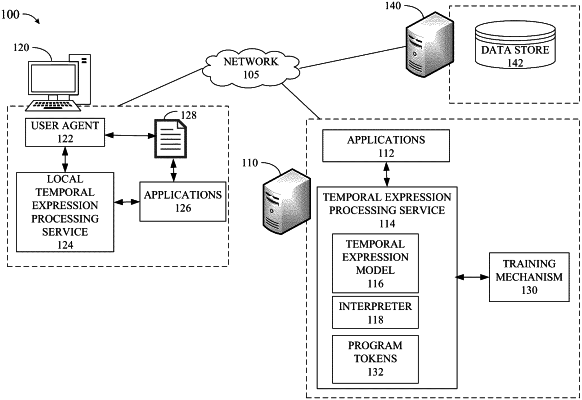| CPC G06F 40/30 (2020.01) [G06F 40/284 (2020.01); G06N 20/00 (2019.01)] | 15 Claims |

|
1. A data processing system comprising:
a processor; and
a memory in communication with the processor, the memory comprising executable instructions that, when executed by, the processor, cause the data processing system to perform functions of:
receiving a request for natural language processing (NLP) of a content segment, the content segment including one or more temporal expressions;
accessing contextual data associated with each of the one or more temporal expressions;
parsing the content segment to identify one or more tokens in the content segment
generating predicted program tokens for an instance of a program in a domain-specific language;
generating the program in the domain-specific language, using an NLP model and based on the one or more tokens of the content segment and the predicted program tokens, the program describing a temporal logic of the content segment based on the one or more temporal expressions;
providing the program and contextual data as inputs to an interpreter;
executing the program using the interpreter to predict an intended time interval for the content segment; and
providing the intended time interval as an output,
wherein the NLP model is trained by using at least one of supervised learning and reinforcement learning.
|